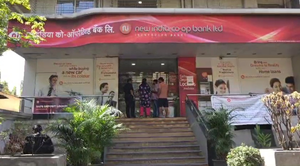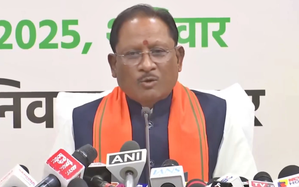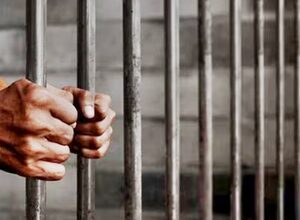Women’s Day: Gender disparities in legal profession and the call for systemic change
New Delhi, March 8 (IANS) The very profession that postulates ‘equality’ as a principle and way of life is itself deficient when it comes to a gender gap in the profession.
The legal profession has made great strides over the years in upholding rights and giving recognition to the most fundamental of our rights, however, gender inequality is an intrinsic problem that still awaits resolution.
There is a huge disparity which is evident from the fact that women constitute only 15 per cent of practicing lawyers. In the higher judiciary too, women are under-represented with only 6 per cent of the judges in the Supreme Court being women and only 11.5 per cent among the High Court judges.
These are not just statistics but is a topic that requires deep deliberation and change of mindset which is not an overnight task.
One cannot be ignorant of the reality where if a reference is made to a household chore the automatic presumption of its responsibility is attached to the woman.
Another reason for many females to drop the profession is marriage and the child rearing that follows.
While we take pride in wearing that collar band, stepping up on the dais and fighting for what is right, there is still a large segment of society especially in the rural areas, that scorns at women taking up this profession, thus reducing the prospects of marriage.
The institutional infrastructure of our courts is also not gender friendly. The most basic of things such as hygienic and clean toilets, be it for males or females, creches, etc. are absent.
The fight today is to establish an inclusive bar as well as bench devoid of caste, gender and class inequalities.
A gender-neutral bar and bench is not only for the sole purpose of equality, but also to provide a different perspective and perception in each case.
Speaking to IANS, Advocate Vediccaa Ramdanee said: “While there is a long journey ahead to achieve this goal, a more immediate solution would require the women in the legal profession to step forward and be more proactive. They should come together to tackle issues of gender inequality in the workplace at least.”
She added: “There are many women lawyers who can lead such associations, and while it may not change things overnight, there is strength in numbers.”
It is also a suggestion and request to the more privileged lot of women to be more approachable for this cause.”
The fight for women empowerment has never been about individual women but has been about the community. More women in positions of power, for example, means more women with better insights into the plight of female litigants, more judges who can relate to and understand their concerns, their socio-economic challenges, and their motivations. Or at least that has been the dream.
Advocate Ishika Mittal said: “What we are often left with in action is that these women in positions of power struggle to survive in the ‘boys club’ and are forced to adopt the ideas of masculinity and power just so that they can continue to have a fighting chance of survival.”
Women in the judiciary are faced with a cruel irony — Officers of the law who are unsafe themselves and are denied justice on a regular basis.
How often does one come across news of female members of the judiciary in the lower courts being sexually harassed and abused? One may be forced to think about all the incidents that still remain unreported out of fear of being transferred, punished and abused for speaking up. It is saddening how often these women pay the price for their bravery with their career.
Women’s safety is somehow spoken about too much and not enough. Every conversation about women empowerment ends up also centering safety concerns as though that is at the core of their struggles and constitute the majority of it. While it undeniably is a major cause for concern, there are also several other minute ways in which the patriarchy materialises which cis-gendered, heterosexual men may not completely ever be able to fathom.
“Judges who are women do not have the liberty to be playful like their male counterparts, lest they be taken lightly. They do not have the liberty to be strict and temperamental either, lest they be called stuck up and arrogant. It is as though they are constantly under a microscope, doomed no matter what,” Mittal said.
She added: “As a practicing litigant myself, I have seen way too many times female judges being denied the respect they deserve by the litigants, the advocates themselves and even their own court staff sometimes for that matter. Many male advocates, especially if they are older than the judge herself, are loath to take directions from them almost as if acknowledging a woman as their superior is beneath them. The judge no matter how ‘learned’ or superior in post, continues to be treated as “just a woman”.”
Being looked down upon, patronised, dismissed and belittled for being a woman is something every woman in this field would concur to have experienced, whether as an advocate or as a judicial member.
Advocate Akankshya Misra also told us how the struggle intensifies in the lower judiciary, despite comparatively better representation.
“Women judges, face not only the challenges of a male-dominated profession but also grapple with issues such as sexual harassment. Recently the poignant account of a woman judge in UP seeking euthanasia due to the systemic dismissal of her grievances sheds light on the harsh realities we face as women in this legal fraternity,” Misra said.
She went on to say that as a female litigating lawyer in Delhi NCR, the battleground extends beyond courtrooms.
The quest for connections becomes a delicate balancing act, where approaching people for professional networking raises questions about favour-seeking.
This challenge is not exclusive to the legal profession but resonates across industries.
“Being a female lawyer carries no inherent advantage before the court, and for first-generation advocates like myself, the additional hurdle of building connections without compromising professional integrity is palpable,” Misra said.
Beyond the court’s confines, the struggles persist in the professional realm. This unfolds as a ‘professional’ in the making, where the ratio of women lawyers remains disproportionately low compared to our male counterparts.
“We deserve more than merely filling a gender imbalance; we merit meritorious recognition and elevated positions. The path to achieving this involves consistent courtroom presence, enabling a collegium to choose from a pool of competent candidates rather than a limited selection,” she said.
Misra added: “My journey as an advocate, especially as a woman, is not a conventional 9 to 5 job. It requires assuming roles as diverse as an entrepreneur, professional, administrator, and leader. Overcoming the challenges of toxic work environments, meager remuneration, and a demanding work-life, we strive for a sense of accomplishment, power, and position. However, as I candidly acknowledge, not everyone may be ready for this challenging expedition.”
As a young advocate, Misra said, her personal experiences shed light on the stark gender disparities within legal offices.
“From the lack of female washrooms to the struggle for inclusion in a male-dominated atmosphere, the challenges faced by women in the legal profession go beyond courtroom battles. This clearly calls for a re-evaluation of basic facilities and challenges the status quo, where women are forced to make compromising choices to be part of the ‘boys’ club,” she said.
In essence, the battles fought within and outside the courtroom reveal a pressing need for systemic change, emphasising that the legal profession should not be a realm where gender determines success but a platform where merit and talent flourish, irrespective of gender.
–IANS
spr//bg




